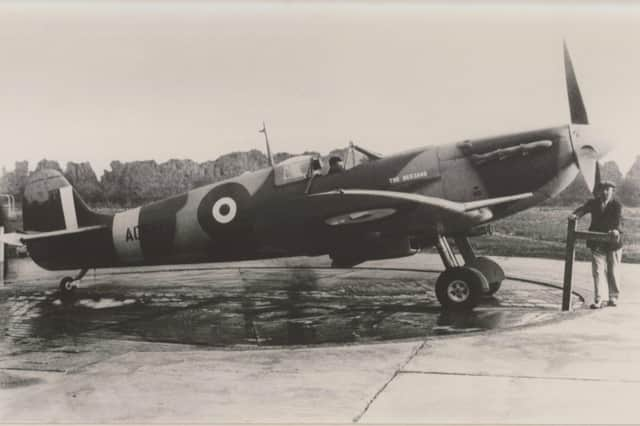Leighton Buzzard’s Wartime History: How the town helped build its own Supermarine Spitfire ‘The Buzzard’


In July 1940 as the Battle of Britain raged and Nazi Germany prepared to invade an appeal was made to the people of Leighton Buzzard, Linslade and Wing as part of ‘War Weapons Week’.
The community were asked to help raise £5,000 in order to build the town’s own Supermarine Spitfire.
Advertisement
Advertisement
The real cost of construction was much more, but to encourage participation and donations, a large barometer was mounted in Leighton Buzzard’s Church Square to track the progress.
A downed Messerschmitt Bf109-E fighter aircraft was displayed in the grounds of Cedars School.
By June 1941 the money had been raised and ‘The Buzzard’ Mark Vb Spitfire. No. AD556 was commissioned from the main production factory at Castle Bromwich in the West Midlands. Pictures of the town’s Spitfire were published for War Weapons Week 1941 and the aircraft made airworthy by October. Within a month it was damaged on operations and grounded for repairs.
On September 15, 1942, it was flown to join Douglas Bader’s former Squadron at RAF Duxford in Cambridgeshire. ‘The Buzzard’ went into combat immediately over the English Channel, providing vital convoy protection against attacking Luftwaffe bombers and fighters. Within ten days it was seriously damaged in an air battle.
Advertisement
Advertisement
The following year, ‘The Buzzard’ was reinvented as a Mk13 Photo Reconnaissance Spitfire, with a strengthened fuselage for large cameras, long range disposable fuel tanks and a new higher powered Rolls Royce Merlin engine. By April, it was back in the hostile skies of Europe, serving with No.1 Photo Reconnaissance Unit at RAF Benson in Oxfordshire.
The reconnaissance pilot flew alone to the designated target at maximum speed. Pointing the high magnification cameras at the enemy target was done by judgement, with the aircraft tipped over on its side when the moment came to operate the shutters.
With its next two Squadrons disbanded that year, ‘The Buzzard’ was transferred to the Royal Canadian Air Force No. 400 (City of Toronto) Fighter Reconnaissance Squadron on Christmas Day 1943.
Here it would fly across occupied Europe to collect important photographic intelligence for the Allied invasion planners, and take before-and-after photographs of the Allied air attacks on German flying bomb sites. During these dangerous flights, ‘The Buzzard’ was badly damaged again and spent most of April 1944 being repaired.
Advertisement
Advertisement
After returning to service and completing further missions in support of the allied liberation of Europe, ‘The Buzzard’ was finally decreed as surplus to requirements, and formally ‘Struck Off Charge’ by the RAF on February 27, 1945 - just seven months before the Second World War ended.
Enquiries to date indicate that Leighton Buzzard’s iconic Spitfire was initially stripped of its components and then scrapped.